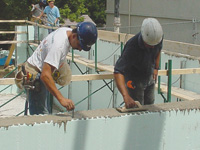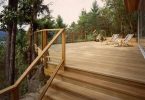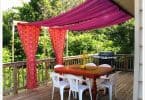 (NC)—Expect to hear ‘net zero’ more often in energy conversations. It is now possible to build a facility—even a home— that is so energy efficient it produces zero demand on the public electricity supply.
(NC)—Expect to hear ‘net zero’ more often in energy conversations. It is now possible to build a facility—even a home— that is so energy efficient it produces zero demand on the public electricity supply.
Earlier in the year, a construction team dedicated to this kind of breakthrough opened the net-zero, Richardsville Elementary School in Lexington, Kentucky. Several innovations contributed to the building plan, but it was an all-Canadian method that was selected for the concrete walls. Ontario-based Nudura produces an advanced version of the insulated concrete form (ICF), a new wall-building method that replaces the traditional, but far less efficient wood framing.
“All combined, the energy performance of this school is expected to surpass all expectations,” says Todd Blyth, marketing manager at Nudura. “In addition to our rock-solid walls, the rooftop solar panels cover 3,600 square metres and provide all of the school’s electricity needs.”
Blyth expects more and more buildings and houses of the future to aim at net-zero. It starts with the initial materials and a “building envelope” that provides maximum insulation.
“Richardsville Elementary sets a standard that can be applied to homebuilding too,” Blyth continued. “If, at the outset, decisions are made carefully regarding the walls, windows, roofing, water management, ventilation and indoor climate control, you are well on your way to completely offsetting the family energy consumption.”
Take a look at some of the most important net-zero components:
• Solar panels on the roof with an electricity grid.
• Geothermal heating and cooling.
• Walls of concrete, not wood. The Nudura system is comprised of stay-in-place, pre-assembled blocks, steel reinforced, and then filled with concrete. It replaces traditional building methods. The durability and energy efficiency of concrete has shown to reduce energy costs up to 70 percent. Better still, the entire structure (www.nudura.com) is reported to be stronger, provide greater fire protection and with far more sound insulation.
• CO2 monitoring system for ventilation. It keeps good air quality indoors and allows no more outdoor air than necessary.
• North-south positioning delivers prolonged day lighting, without glare. All artificial lighting is off during 70 percent of school hours.
• Wireless computers. The lab utilizes five carts, each loaded with 30 laptops saving energy, wiring and construction. Laptops use a fraction of the energy used to run a typical desktop computer.
• Food preparation is energy-efficient. School kitchens typically use as much as 25 percent of a school’s electricity.
www.newscanada.com
Latest posts by Canadian Home Trends (see all)
- Dining Room Design Tips - July 2, 2025
- Practical Luxury in Forest Grove - July 2, 2025
- The Hidden Value of Great Design - July 2, 2025






